Indoor Air Pollutants: How They Hurt You and How to Protect Your Family
It may be surprising, but indoor air quality is worse than outdoor air quality.
Learn how to combat this issue.
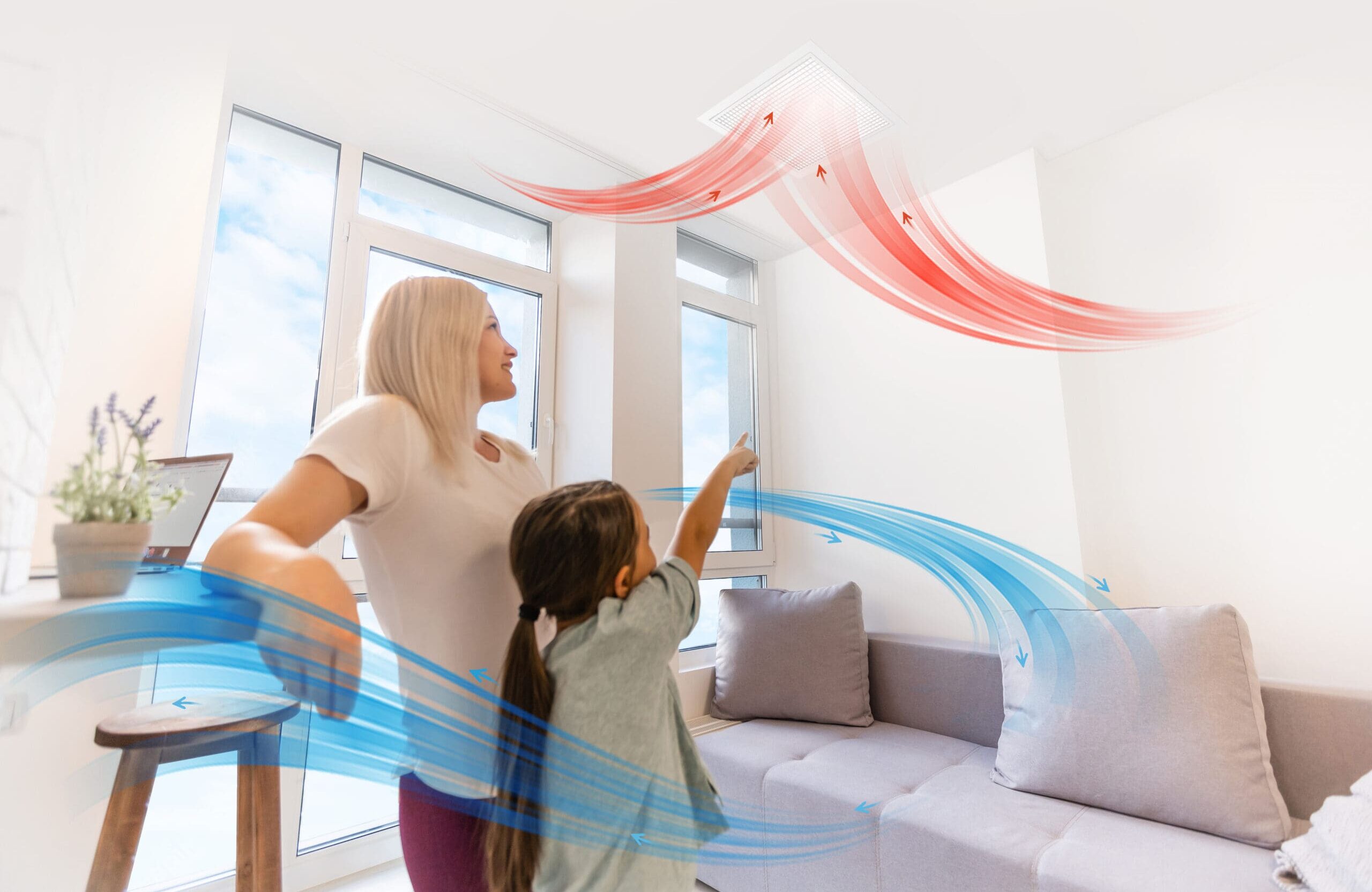
Many people may not think that indoor air in their home can be worse than outdoor air, but according to the EPA, the levels of indoor air pollutants are often 2 to 5 times higher than outdoor levels, and in some cases these levels can exceed 100 times that of outdoor levels of the same pollutants.
Even more shocking, according to the World Health Organization (WHO), over four million people die each year from exposure to indoor air pollutants. Considering Americans spend nearly 90% of their lives indoors, this is cause for concern.
So, what are indoor air pollutants? How do they affect your health? How can you protect yourself and your family? Read on to find out the answers to these questions.
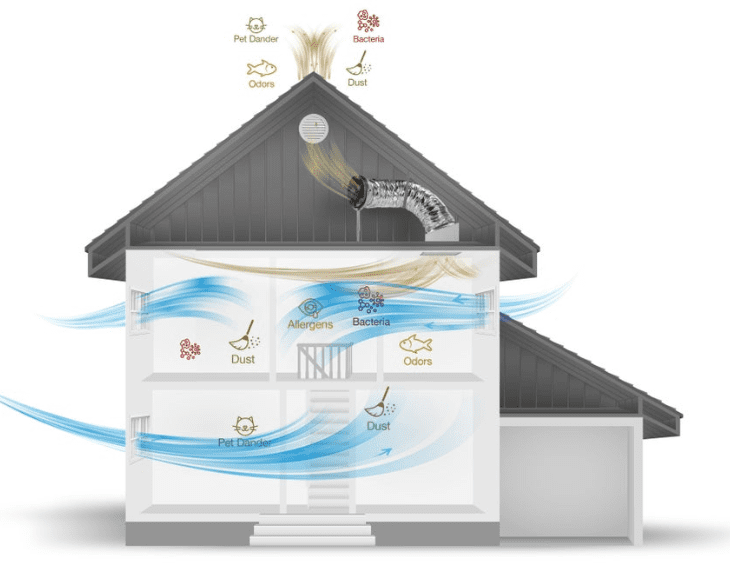
What Are Indoor Air Pollutants?
When considering air pollution, many of us focus on outdoor environments. This is because outdoor pollutants create visible smog, unlike indoor contaminants which are often unnoticed but still harmful. However, there are countless sources of indoor air pollution that we have to worry about. These include dust, moisture, mold, smoke, volatile organic compounds and combustion products such as gas-powered appliances.
How Does Poor Indoor Air Quality Affect Your Health?
Any amount of exposure to indoor air pollutants can have an effect on your health. Long-term, it can cause or contribute to the development of infections, lung cancer and chronic lung diseases such as asthma. And you may not even realize it’s occurring in your home because the initial symptoms of indoor air pollution mimic those of a common cold or allergies, leading to frequent misdiagnosis.
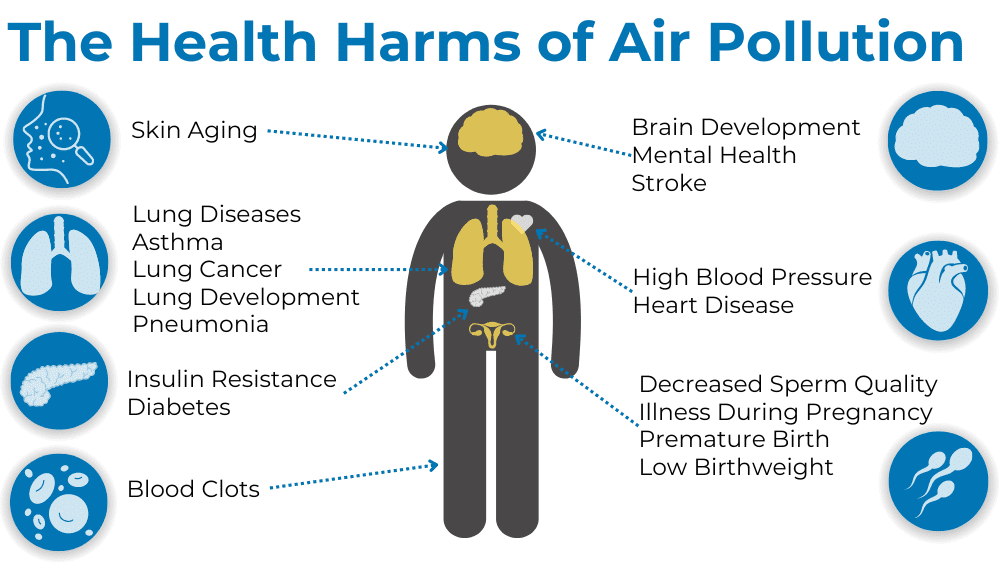
Women and young children are especially vulnerable to the negative effects of indoor air pollution. Poor indoor air quality not only causes chronic nasal congestion, coughing and difficulty sleeping due to respiratory symptoms in children but also affects their breathing, development and learning, as highlighted by the Early Childhood Learning & Knowledge Center.
Additionally, a study conducted at the Institute of Psychiatry, Psychology and Neuroscience at King’s College London highlighted the long-term health risks associated with exposure to high levels of pollution during childhood. The study found a link between such exposure and poorer mental health later in life. Specifically, certain indoor pollutants increased the likelihood of children developing mental disorders like depression or anxiety by the age of 18.
Pollution also poses a health risk to babies too, and often before they are even born. A recent global study associated premature births with air pollution among 6 million babies during the year 2019. In addition to this, the study found a correlation between pollution and low birth weight, which is classified as a birth weight of fewer than 2500 grams (5 lbs 5 oz), among 3 million babies.
Protect Yourself and Your Family from Poor Indoor Air Quality
Despite the alarming statistics revealing the detrimental impacts of poor indoor air quality on health and well-being, there’s reassuring news: you can take preventative steps to protect yourself and your family from experiencing these harmful effects.

1. Stay Informed
Knowledge is your greatest ally when it comes to protecting your family. Reading this blog and understanding the types of indoor air pollutants and its effect on your health and well-being is the first step to creating a healthier home environment.
2. Pay Attention to Your Combustion Products
Make sure all your combustion products (stoves, furnaces, water heaters, dryers, etc.) are working the way they should be and are ventilating properly by inspecting them regularly. Try to limit your use of combustion products to keep your indoor air as pure as possible.
3. Improve Your Home Ventilation
Ventilation is key and the best way to clear out your home and combat indoor air pollutants. Many modern houses are well-insulated but aren’t necessarily well-ventilated. The result can be a home that traps heat in the summer, and traps moisture and pollutants year-round.
The American Lung Association suggests a few ways to properly ventilate your house:
- Use bathroom fans to remove moisture and gases from the house. Use 30-45 minutes after and during bathing.
- Open windows and use a portable fan to push the air out of the room.
- Open your doors and windows for at least 15 minutes each day.
If these crucial daily activities sound like too much of a hassle, Solatube can help!
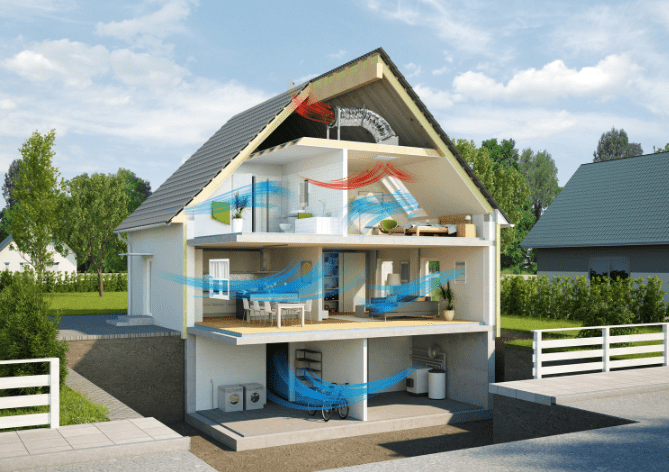
Solatube Whole House Fans
The best and easiest way to improve ventilation in your home is with the right whole house fan. Unlike a traditional air conditioner, whole house fans do not recirculate the air in the home. Instead, Solatube Whole House Fans pull the cooler outdoor air into your home, through your windows, across your living space, into the attic, and out the attic vents, replacing the hot, stale, polluted air in your home.
These fans have been proven to properly ventilate the home and fight against dust, odor, dirty air and pathogens. Additionally, during the warmer months, a Solatube Whole House Fan can help cool your home and attic by up to 30 degrees, saving you up to 90% off your A/C bill. You can learn more about the energy-efficient, whisper-quiet Solatube Whole House Fan here: solatube.com/residential/whole-house-fans.
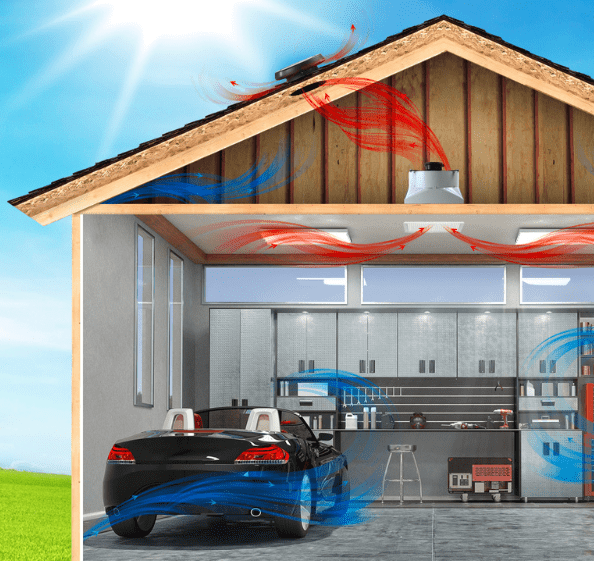
Solatube Attic Fans
For maximum home ventilation, we recommend pairing your Solatube Whole House Fan with a Solatube Attic Fan. These solar-powered systems neutralize moisture and drive out attic heat to fight against mold and fungus growth. They operate by pulling hot air out through a roof vent, drawing in cooler outdoor air through existing vents located along with the soffits (on the underside of the roof overhang). New air then comes in through the windows and circulates throughout your entire home. Similar to a whole house fan, the exchange of stale, warm air for fresh, cool air alleviates pressure (and ultimately, cost) put on your air conditioner. Learn more about Solatube Solar-Powered Attic Fans here: solatube.com/residential/attic-fans.
Solatube Garage Fans
Lastly, for those who love to spend time in the garage, a Solatube Garage Fan can make a huge difference. These powerful systems can improve the air quality, prevent mold and moisture accumulation, and lower temperatures to improve comfort. Learn about our three powered and solar-powered options here: solatube.com/residential/garage-fans.
Need help deciding and improving your home ventilation?
Improve your home’s air quality and fight harmful indoor air pollutants by visiting solatube.com/find-solatube-dealer-near-you or by calling 888.SOLATUBE to schedule a free virtual or in-home consultation with your local Solatube Premier Dealer.